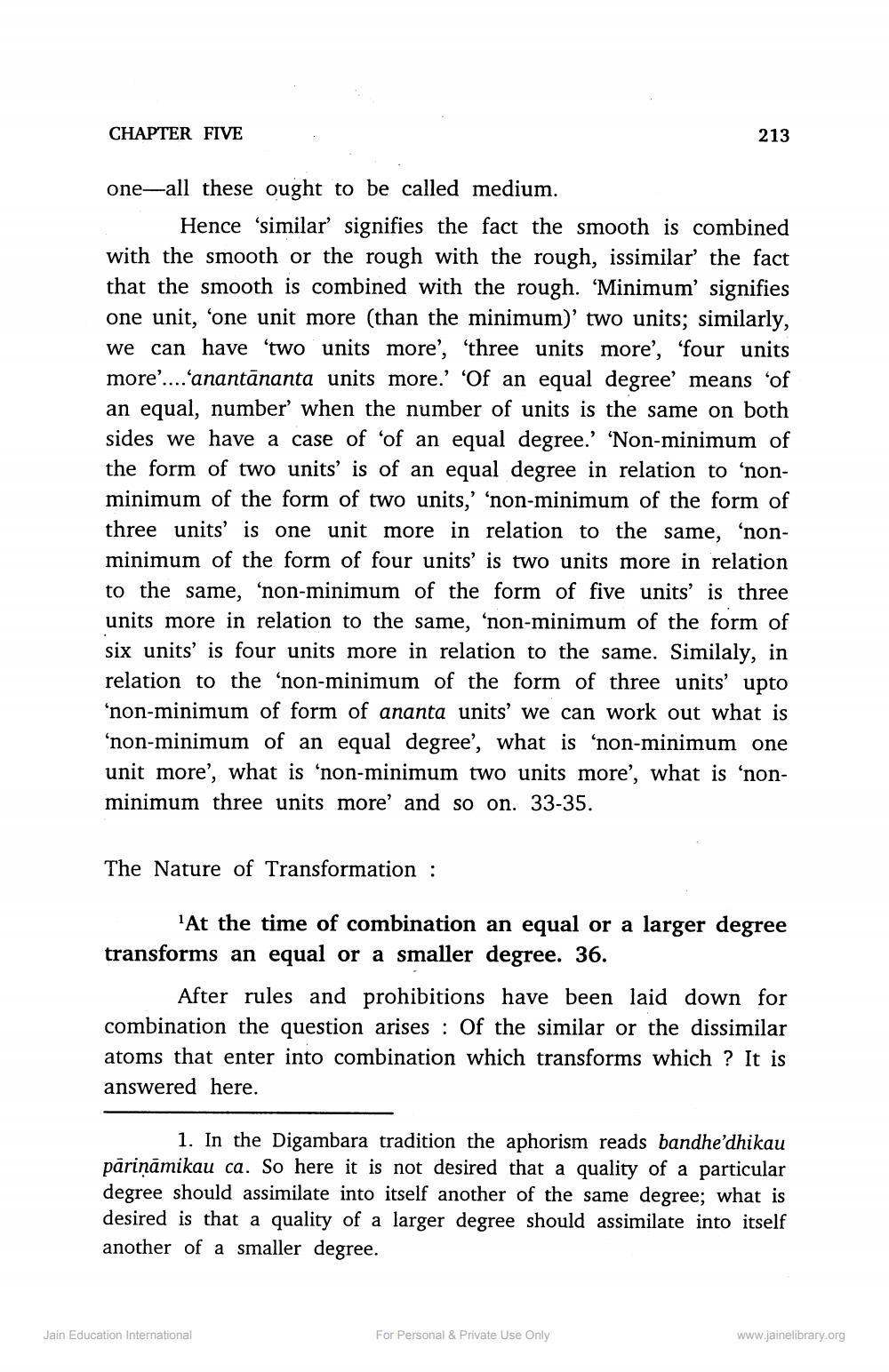________________
CHAPTER FIVE
213
one-all these ought to be called medium.
Hence ‘similar signifies the fact the smooth is combined with the smooth or the rough with the rough, issimilar the fact that the smooth is combined with the rough. ‘Minimum signifies one unit, ‘one unit more (than the minimum)' two units; similarly, we can have two units more', 'three units more', 'four units more.... anantānanta units more.' 'Of an equal degree' means of an equal, number when the number of units is the same on both sides we have a case of 'of an equal degree.' 'Non-minimum of the form of two units' is of an equal degree in relation to ‘nonminimum of the form of two units,' 'non-minimum of the form of three units' is one unit more in relation to the same, 'nonminimum of the form of four units' is two units more in relation to the same, 'non-minimum of the form of five units' is three units more in relation to the same, 'non-minimum of the form of six units' is four units more in relation to the same. Similaly, in relation to the 'non-minimum of the form of three units' upto ‘non-minimum of form of ananta units' we can work out what is ‘non-minimum of an equal degree', what is ‘non-minimum one unit more', what is ‘non-minimum two units more', what is ‘nonminimum three units more and so on. 33-35.
The Nature of Transformation :
At the time of combination an equal or a larger degree transforms an equal or a smaller degree. 36.
After rules and prohibitions have been laid down for combination the question arises : Of the similar or the dissimilar atoms that enter into combination which transforms which ? It is answered here.
1. In the Digambara tradition the aphorism reads bandhe'dhikau pāriņāmikau ca. So here it is not desired that a quality of a particular degree should assimilate into itself another of the same degree; what is desired is that a quality of a larger degree should assimilate into itself another of a smaller degree.
Jain Education International
For Personal & Private Use Only
www.jainelibrary.org




